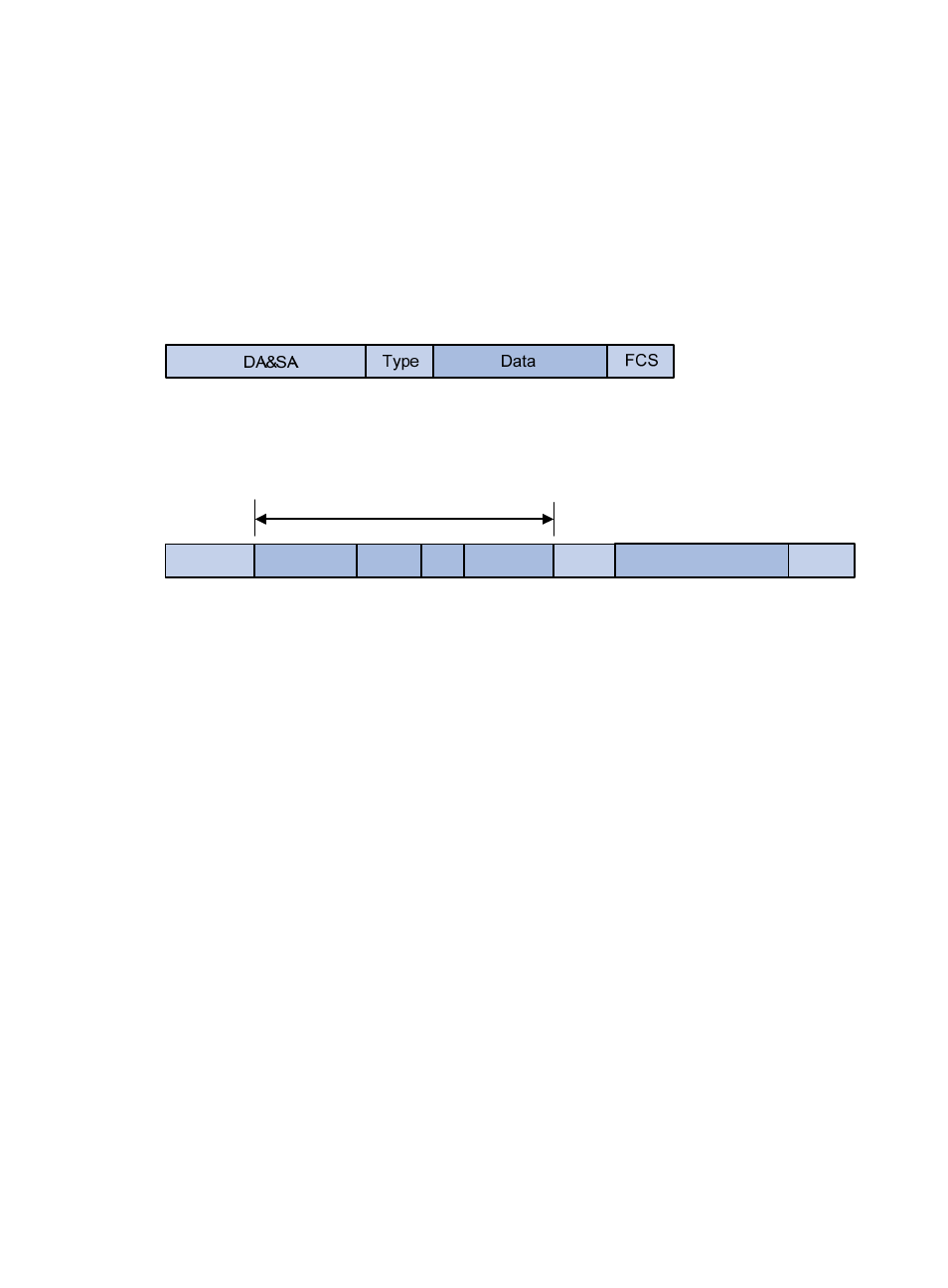Vlan frame encapsulation – H3C Technologies H3C WX5500E Series Access Controllers User Manual
Page 121

110
VLAN frame encapsulation
In order that a Layer 2 switch can identify frames of different VLANs, a VLAN tag field is inserted into the
data link layer encapsulation.
The format of VLAN-tagged frames is defined in IEEE 802.1Q issued in 1999.
As shown in
, in the header of a traditional Ethernet packet, the field after the destination MAC
address and the source MAC address (DA & SA) field is the Type field, which indicates the upper layer
protocol type.
Figure 33 Traditional Ethernet packet format
IEEE 802.1Q inserts a four-byte VLAN tag between the DA & SA field and the Type field to identify the
.
Figure 34 Position and format of VLAN tag
The fields of a VLAN tag are TPID, priority, CFI, and VLAN ID.
•
TPID—The 16-bit TPID field indicates whether a frame is VLAN-tagged. By default, the TPID value is
0x8100, which indicates that the frame is VLAN-tagged. Devices vendors can set the TPID to
different values. For compatibility with these devices, modify the TPID value so that frames carry a
TPID value identical to the value of a particular vendor, allowing interoperability with devices from
that vendor. The device determines whether a received frame carries a VLAN tag by checking the
TPID value. When the TPID value of a frame is the configured value or 0x8100, the frame is
considered as a VLAN-tagged frame. For information about commands used to modify TPID values,
see Layer 2—LAN Switching Command Reference.
•
Priority—The 3-bit priority field indicates the 802.1p priority of the frame.
•
CFI—The 1-bit CFI field indicates whether the MAC addresses are encapsulated in standard format
when packets are transmitted across different media. A value of 0 indicates that MAC addresses
are encapsulated in standard format. A value of 1 indicates that MAC addresses are encapsulated
in a non-standard format. The value of this field is 0 by default.
•
VLAN ID—The 12-bit VLAN ID field identifies the VLAN that the frame belongs to. The VLAN ID
range is 0 to 4095. Because 0 and 4095 are reserved, a VLAN ID actually ranges from 1 to 4094.
A network device handles an incoming frame depending on whether the frame is VLAN tagged and the
value of the VLAN tag, if any. For more information, see "
Introduction to port-based VLAN
Ethernet supports encapsulation formats Ethernet II, 802.3/802.2 LLC, 802.3/802.2 SNAP, and 802.3
raw. The Ethernet II encapsulation format is used here. For how the VLAN tag fields are added to frames
encapsulated in these formats for VLAN identification, see related protocols and standards.
When a frame carrying multiple VLAN tags passes through, the device processes the frame according to
its outer VLAN tag, and transmits the inner tags as payload.
TPID
DA&SA
Type
Priority CFI
VLAN Tag
FCS
Data
VLAN ID